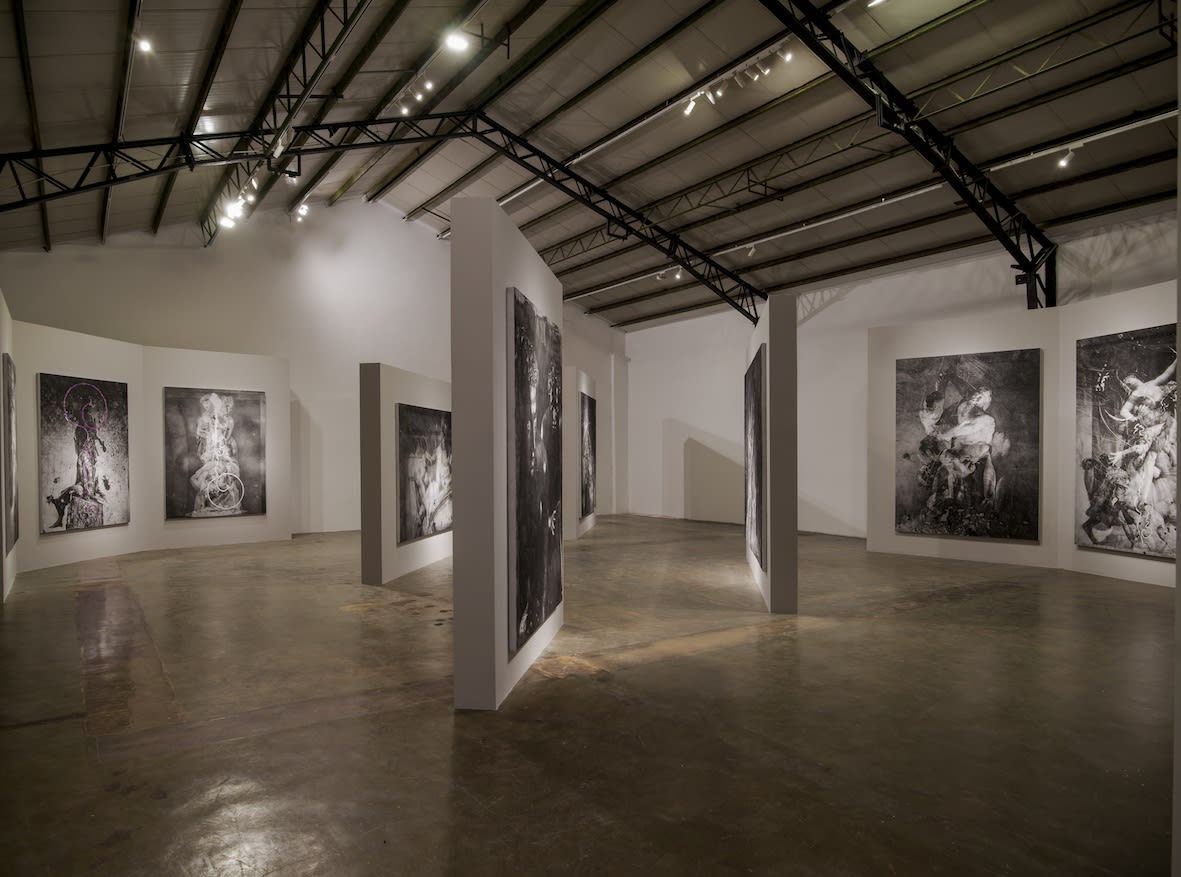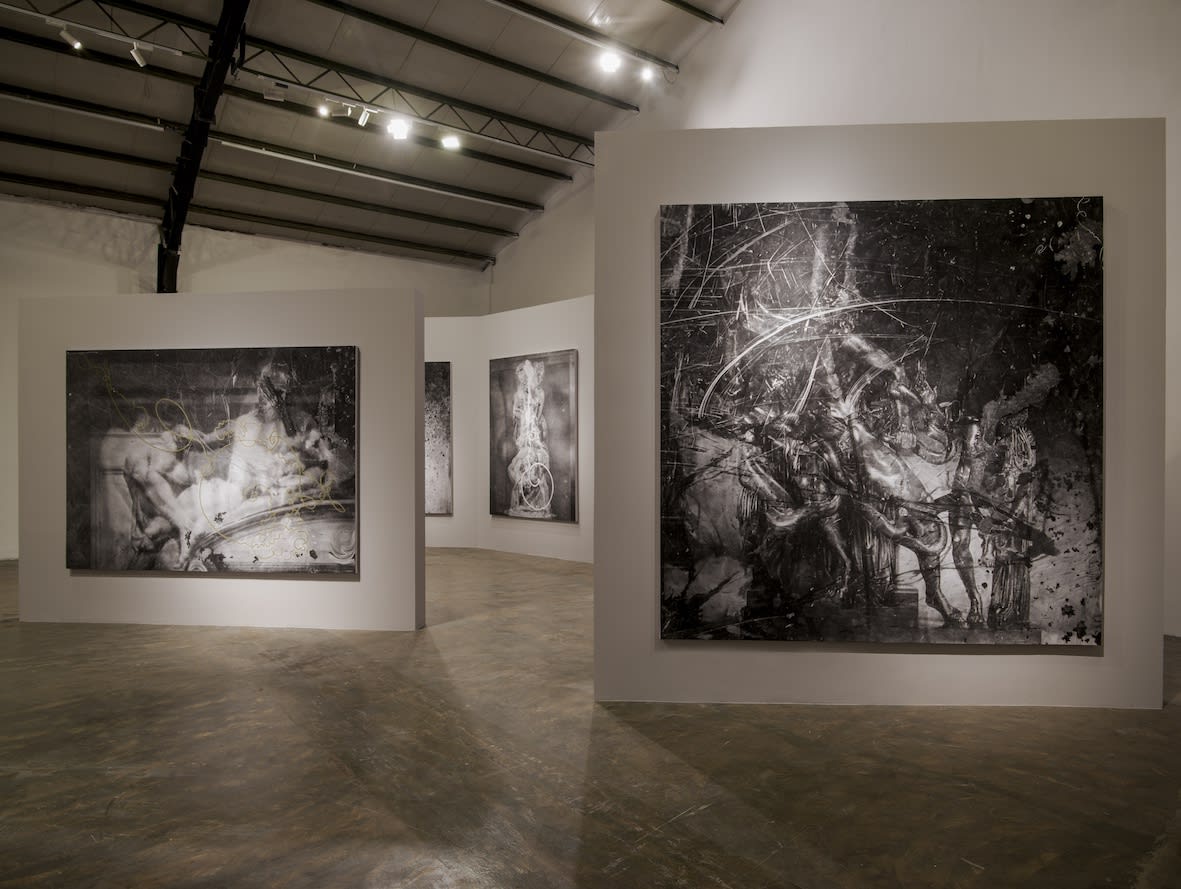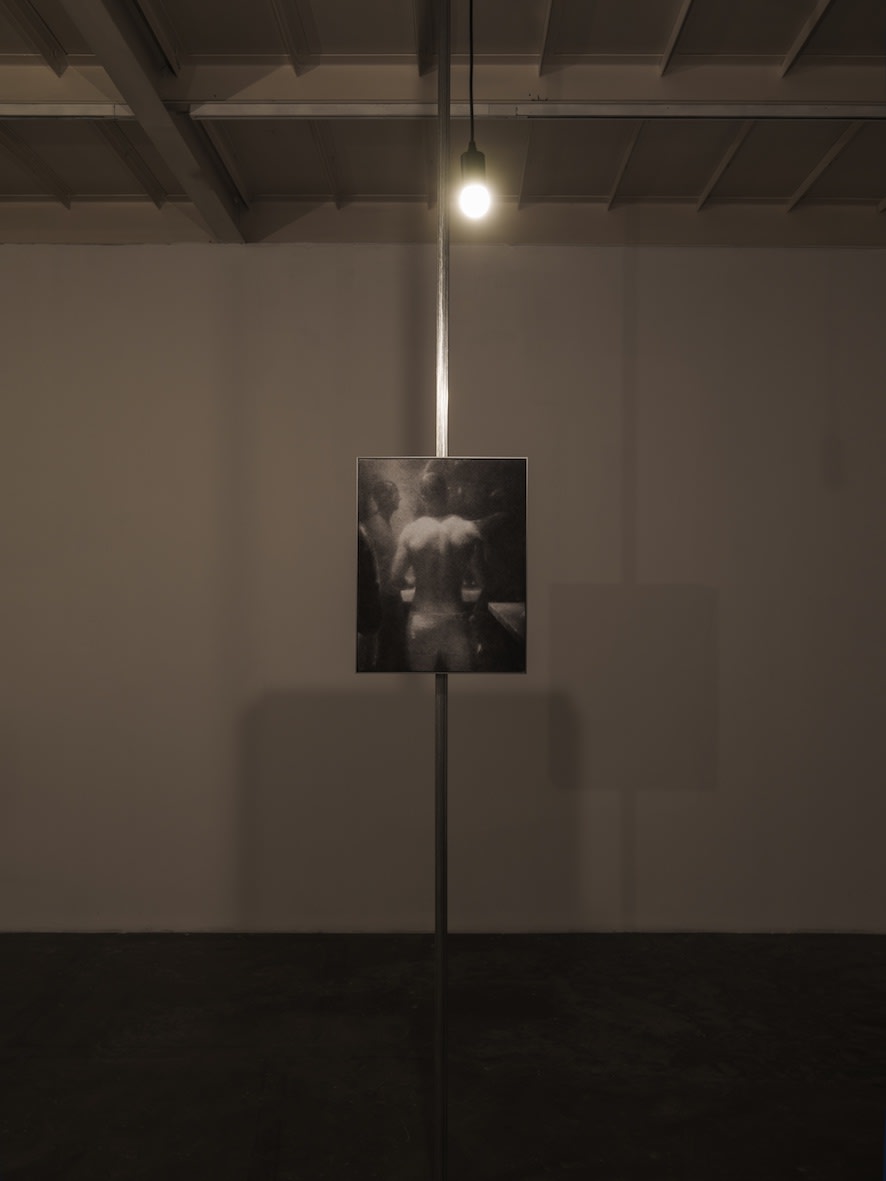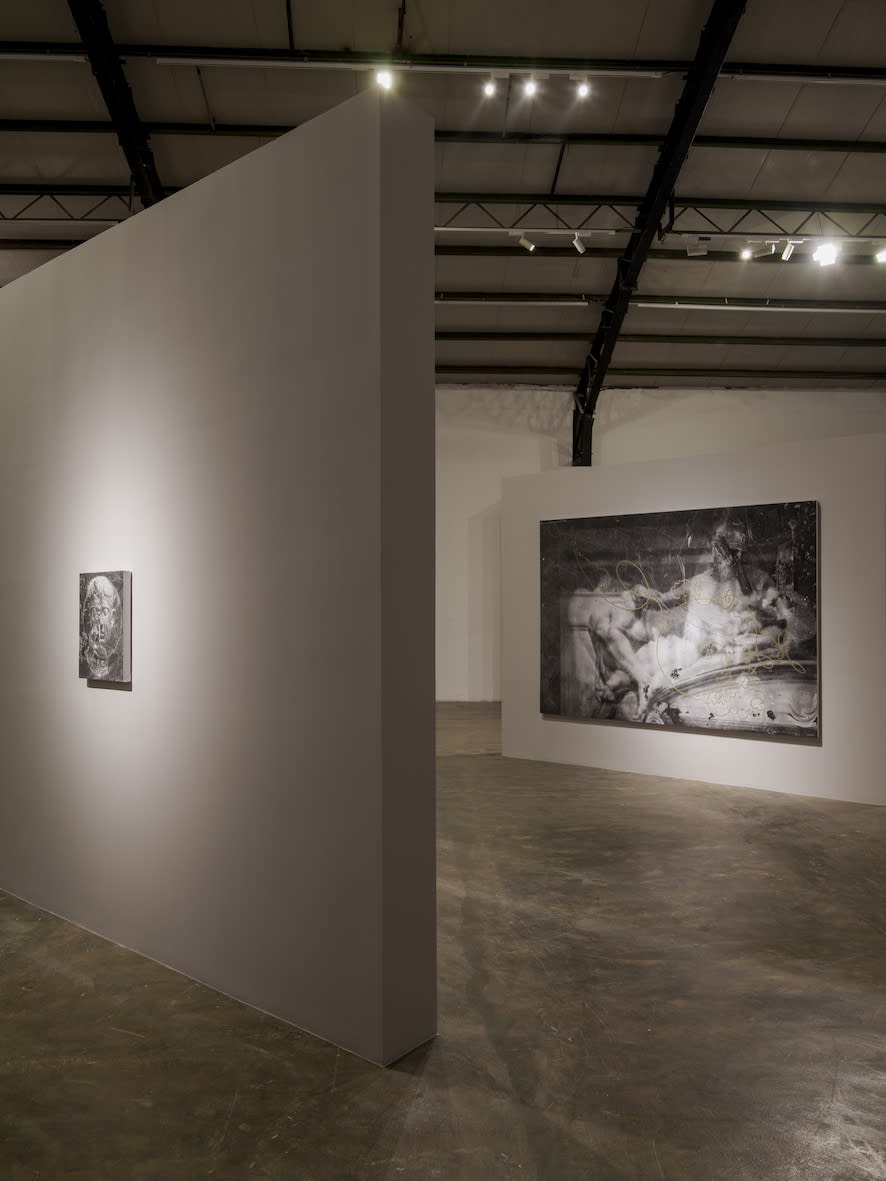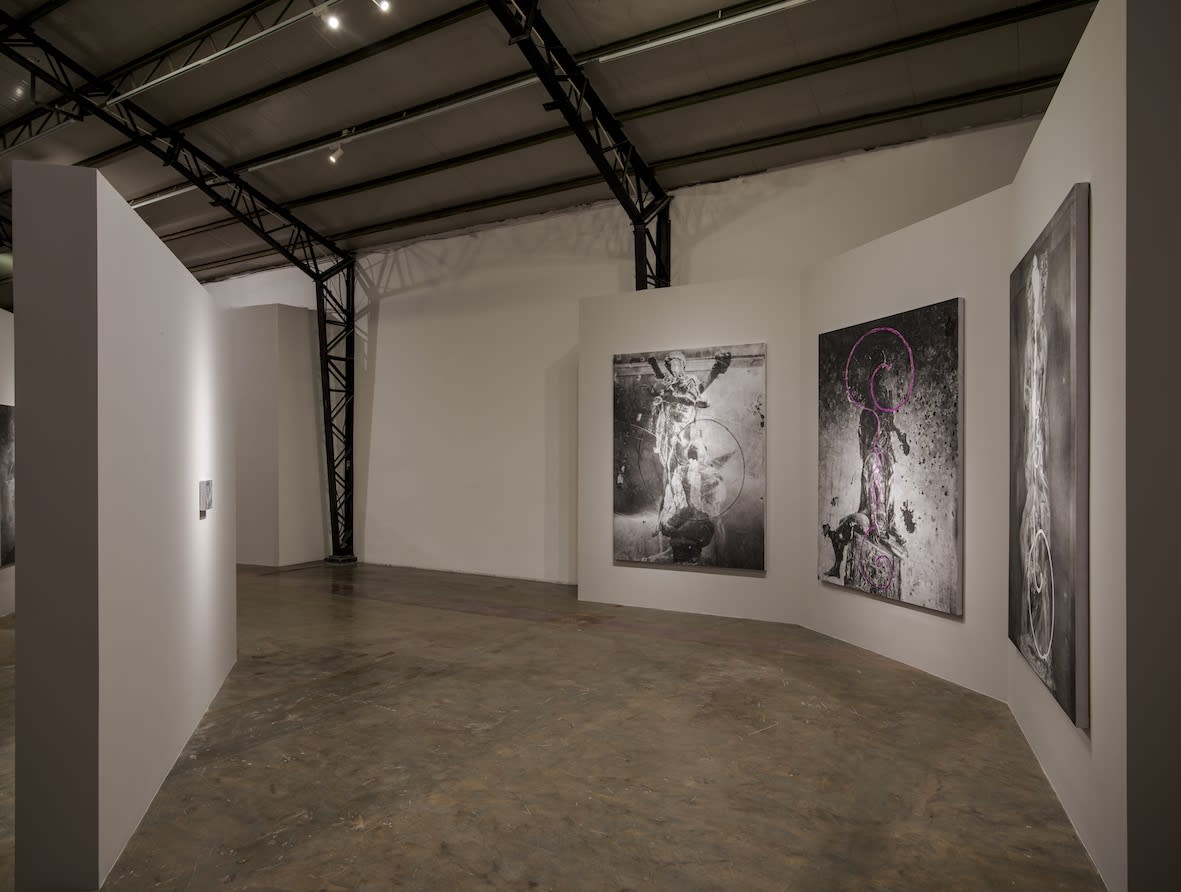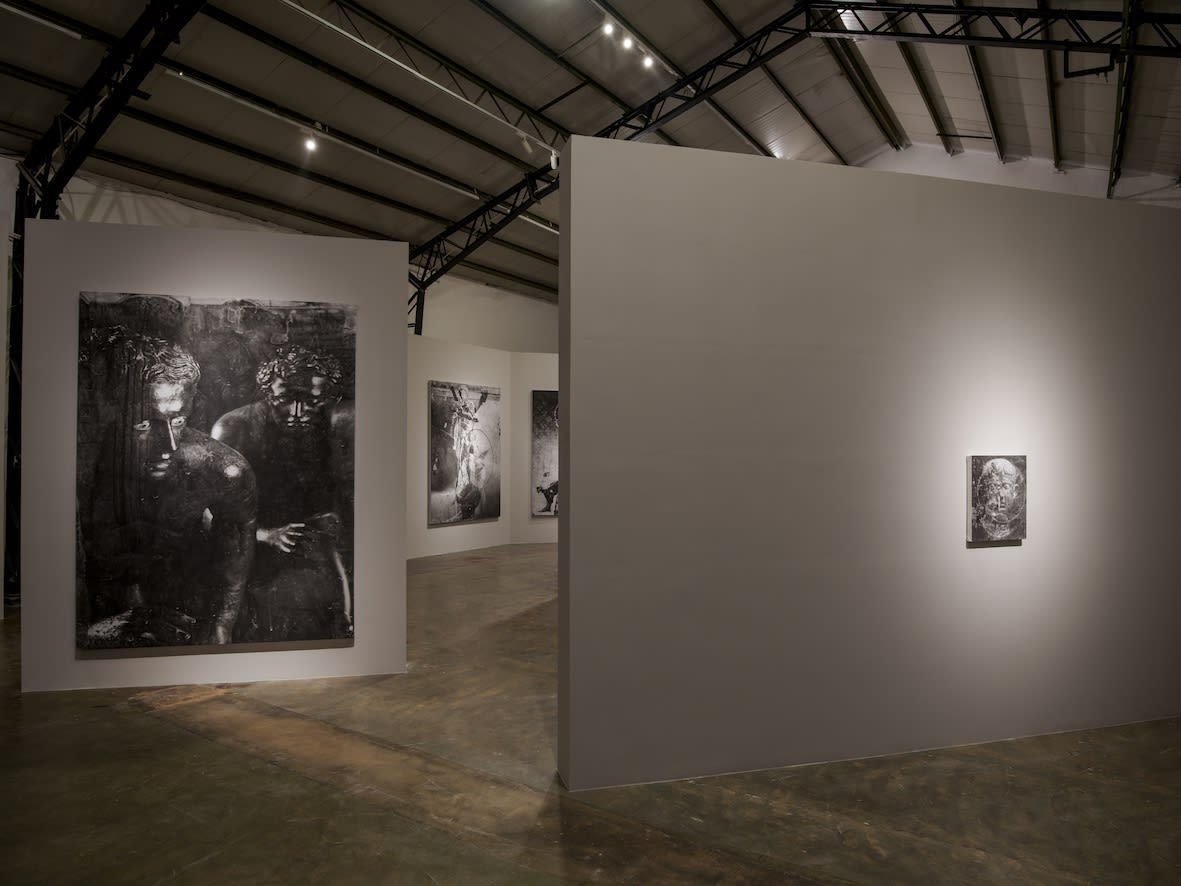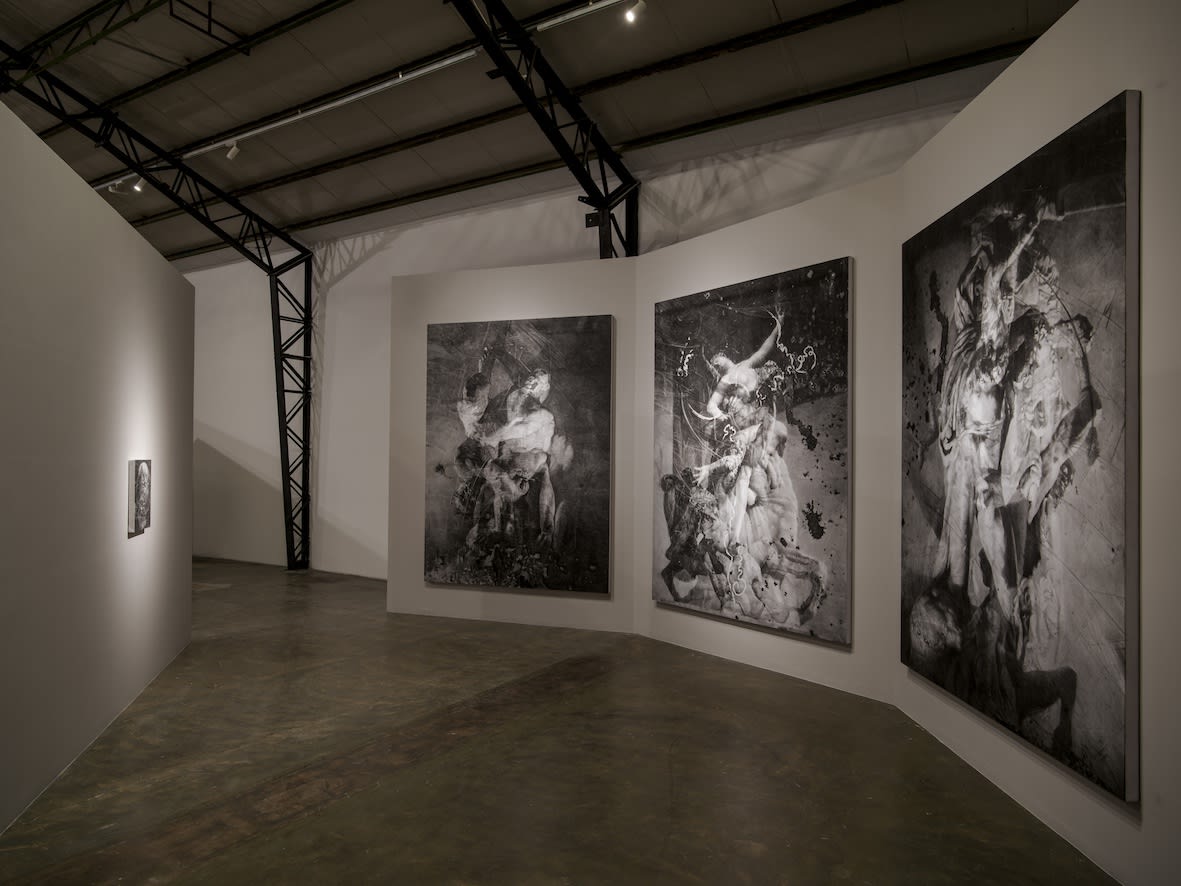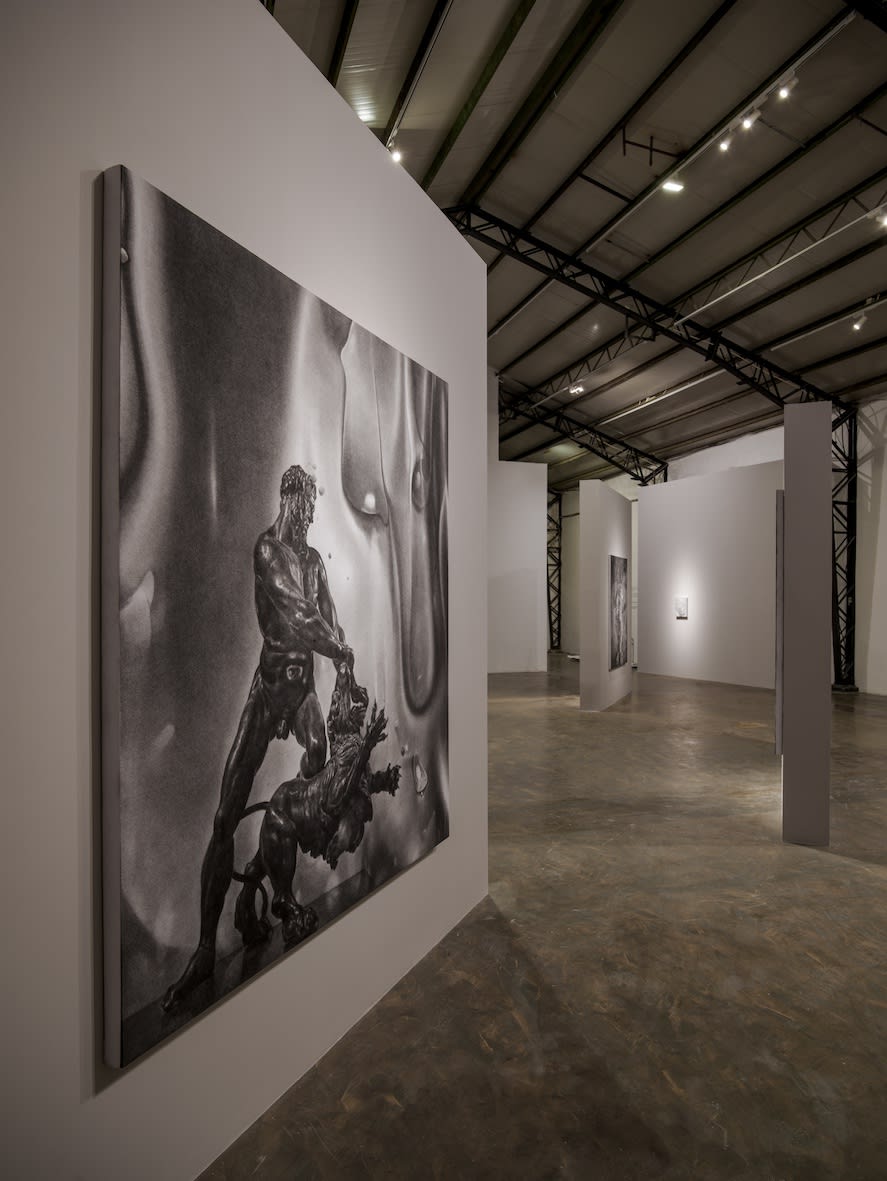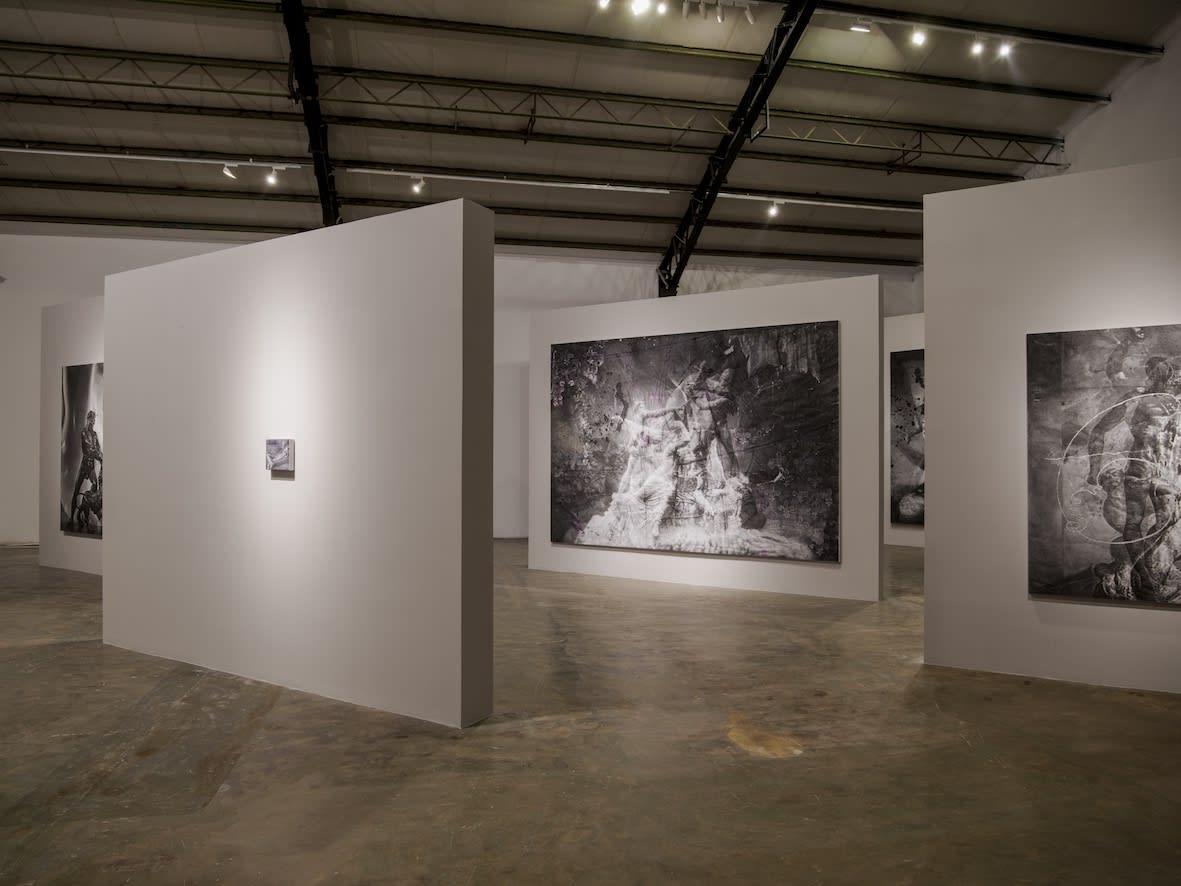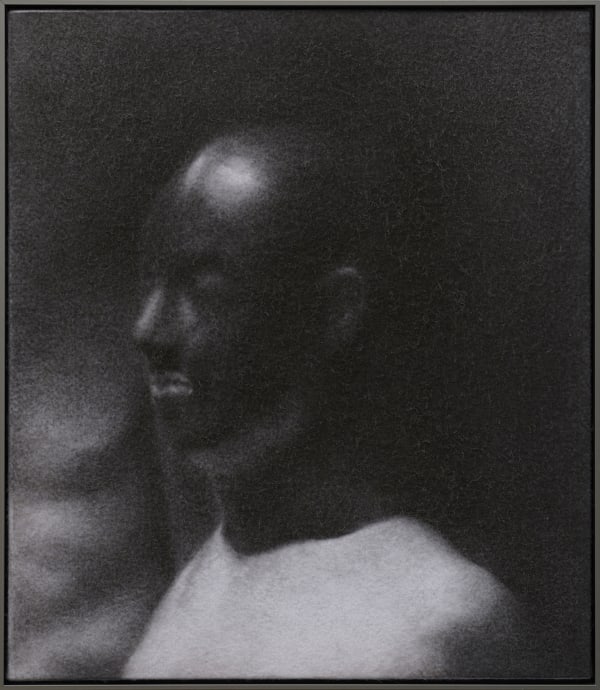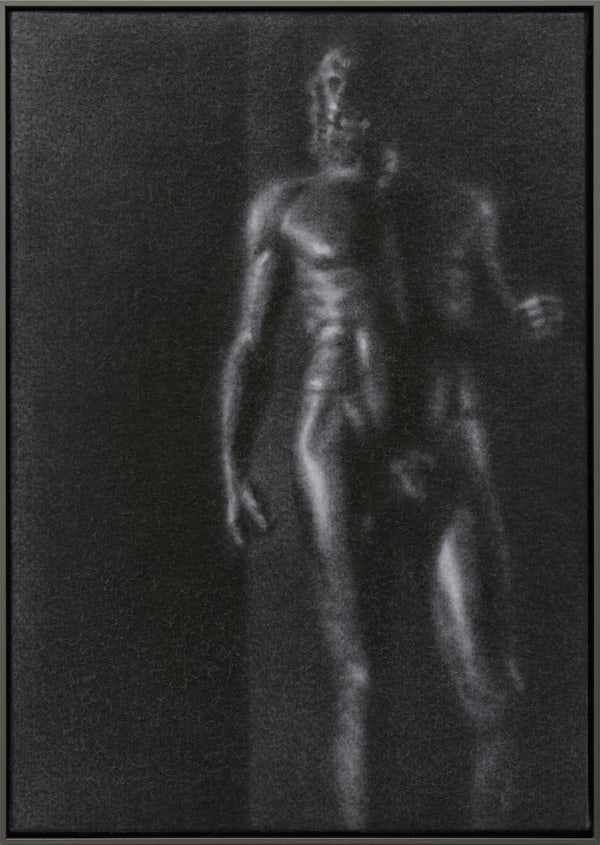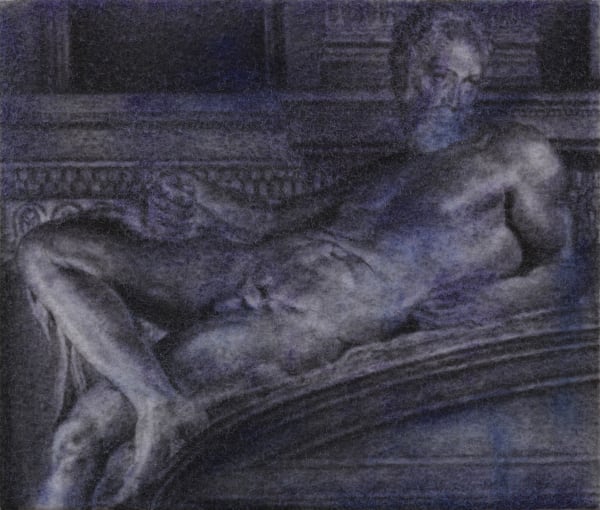ZHANG Yunyao: Palace of Extasy: Solo Exhibition
Past exhibition
Installation Views
Overview
Qiao Space and Don Gallery are proud to present ZHANG Yunyao’s first solo exhibition since 2017 -- “Palace of Extasy,” curated by HE Jing.
Over the last two years, ZHANG has been developing a clearer and clearer awareness of the interval between concept and image where his work inhabits.On the one hand, this awareness is an outgrowth of a more relevant motif -- one involving the study and repeated description of the human form and its imagery. On the other hand, the artist has become a maestro of the medium of felt, which has been a mainstay of his long-term practice -- an understanding that transcends technique, and includes a methodological and conceptual instinct borne of practice. Working with felt as a canvas, ZHANG is “voluntarily forced” into an irreversible method of painting, which demands rigorous execution and an ironfisted grasp of every detail. Within this process, which ZHANG has coined “anti-painting,” execution outweighs “lyricism.” The artist does not “express” form via line and brushstroke, rather, he “maps out” the image by tracing and filing it in.To extend the metaphor further, if painting is a process of energy and expression, and each stroke of the brush is a metaphor for passion and pain, then ZHANG Yunyao’s “painting” is a calm and “painless” pursuit. It is as if the direct stimulation of the body’s faculties has been inhibited, lulling the sensory metaphor of painting into a state of dormancy.
However “painless” this ambitious “anti-painting” technique may present metaphorically, the way it presents on the canvas is another beast altogether, one which forms a counterpoint.In the dislocated space between “Painting” with a capital “P” and the specific image, ZHANG’s work follows its own set of rules, constitute a subtle area of intrigue. The perception of ZHANG’s work totally betrays the sense of “apathie” and “sense of loss” underlying their conceptual mechanism. On the contrary, the paintings are abnormally functional.As a painter, ZHANG is hypersensitive to the subtle variations of gloss and the psychological effect of such variations, which is why his work often features black with a sheen of silver. Up close, the gloss presents as full, rich granules of pigment, evoking a strong tactile experience. While on the whole, it speaks a textural language of lustre, skin, and flesh. Contrary to the “insensate” mode of choice the artist uses while painting, the resultant images have been created for the explicit purpose of teasing out a specific sensation and experience with their lustrous siren song of sensation -- a tremor which erupts under the skin, only at close proximity to the flesh.
On this level, it can be said that ZHANG’s work is not “anti-painting” at all -- in that it is not antithetical to the emotion of painting. In an instant of reversal, the negation of concept and behavior finds a hierarchy within the work itself, which allows the sensory experience to be maneuvered around and re-released.ZHANG says that the functional experience and the depth of pleasure he demands of his work cannot be attained except on the level of désœuvrement (tr: idleness). He must delay and restrain experience while painting in order to elevate the experience of the painting to another echelon of intensity. This zone of suspension and re-entry approaches the “absence of feeling” that Bataille emphasizes in his textual analyses of de Sade -- an attitude of “ruthlessness” and “absence of feeling” through which one proves the existence of the individual by delineating the negative space, an “elevation” experienced via suspension.This moment approaches the religious experience, marking a supreme experience of the faculties, so intense, that it can only be attained through “disengagement” or “extasy” of the ego. It represents a higher plane of experience for the body and its faculties, a heterogeneous temporality which is ekked out.If it is said that ZHANG’s paintings take a detour, suspending the sensory metaphor of painting by seeking out a metaphysical experience in the ontological sense, then this act of creation is itself a moment of “extasy” -- one which possesses a reflective structure and takes a roundabout path. Therefore, ZHANG’s so-called “anti-painting” represents paradoxically, a departure from and a return to painting.
Excerpt from ZHANG Yunyao: Palace of extasy
Author: HE Jing
Over the last two years, ZHANG has been developing a clearer and clearer awareness of the interval between concept and image where his work inhabits.On the one hand, this awareness is an outgrowth of a more relevant motif -- one involving the study and repeated description of the human form and its imagery. On the other hand, the artist has become a maestro of the medium of felt, which has been a mainstay of his long-term practice -- an understanding that transcends technique, and includes a methodological and conceptual instinct borne of practice. Working with felt as a canvas, ZHANG is “voluntarily forced” into an irreversible method of painting, which demands rigorous execution and an ironfisted grasp of every detail. Within this process, which ZHANG has coined “anti-painting,” execution outweighs “lyricism.” The artist does not “express” form via line and brushstroke, rather, he “maps out” the image by tracing and filing it in.To extend the metaphor further, if painting is a process of energy and expression, and each stroke of the brush is a metaphor for passion and pain, then ZHANG Yunyao’s “painting” is a calm and “painless” pursuit. It is as if the direct stimulation of the body’s faculties has been inhibited, lulling the sensory metaphor of painting into a state of dormancy.
However “painless” this ambitious “anti-painting” technique may present metaphorically, the way it presents on the canvas is another beast altogether, one which forms a counterpoint.In the dislocated space between “Painting” with a capital “P” and the specific image, ZHANG’s work follows its own set of rules, constitute a subtle area of intrigue. The perception of ZHANG’s work totally betrays the sense of “apathie” and “sense of loss” underlying their conceptual mechanism. On the contrary, the paintings are abnormally functional.As a painter, ZHANG is hypersensitive to the subtle variations of gloss and the psychological effect of such variations, which is why his work often features black with a sheen of silver. Up close, the gloss presents as full, rich granules of pigment, evoking a strong tactile experience. While on the whole, it speaks a textural language of lustre, skin, and flesh. Contrary to the “insensate” mode of choice the artist uses while painting, the resultant images have been created for the explicit purpose of teasing out a specific sensation and experience with their lustrous siren song of sensation -- a tremor which erupts under the skin, only at close proximity to the flesh.
On this level, it can be said that ZHANG’s work is not “anti-painting” at all -- in that it is not antithetical to the emotion of painting. In an instant of reversal, the negation of concept and behavior finds a hierarchy within the work itself, which allows the sensory experience to be maneuvered around and re-released.ZHANG says that the functional experience and the depth of pleasure he demands of his work cannot be attained except on the level of désœuvrement (tr: idleness). He must delay and restrain experience while painting in order to elevate the experience of the painting to another echelon of intensity. This zone of suspension and re-entry approaches the “absence of feeling” that Bataille emphasizes in his textual analyses of de Sade -- an attitude of “ruthlessness” and “absence of feeling” through which one proves the existence of the individual by delineating the negative space, an “elevation” experienced via suspension.This moment approaches the religious experience, marking a supreme experience of the faculties, so intense, that it can only be attained through “disengagement” or “extasy” of the ego. It represents a higher plane of experience for the body and its faculties, a heterogeneous temporality which is ekked out.If it is said that ZHANG’s paintings take a detour, suspending the sensory metaphor of painting by seeking out a metaphysical experience in the ontological sense, then this act of creation is itself a moment of “extasy” -- one which possesses a reflective structure and takes a roundabout path. Therefore, ZHANG’s so-called “anti-painting” represents paradoxically, a departure from and a return to painting.
Excerpt from ZHANG Yunyao: Palace of extasy
Author: HE Jing
Works
-
 ZHANG Yunyao 张云垚Study in Figures 形体习作, 2018Graphite on felt 石墨毛毡265 x 380 cm
ZHANG Yunyao 张云垚Study in Figures 形体习作, 2018Graphite on felt 石墨毛毡265 x 380 cm -
 ZHANG Yunyao 张云垚Study in Figures (FIRMITVDO&VELOCITAS) 形体习作(FIRMITVDO&VELOCITAS), 2019Graphite and pigment on felt 石墨 色粉 毛毡200 x 270 cm
ZHANG Yunyao 张云垚Study in Figures (FIRMITVDO&VELOCITAS) 形体习作(FIRMITVDO&VELOCITAS), 2019Graphite and pigment on felt 石墨 色粉 毛毡200 x 270 cm -
 ZHANG Yunyao 张云垚Study in Figures 形体习作, 2019Graphite on felt 石墨毛毡305 x 230 cm
ZHANG Yunyao 张云垚Study in Figures 形体习作, 2019Graphite on felt 石墨毛毡305 x 230 cm -
 ZHANG Yunyao 张云垚Study in Figures 形体习作, 2018Graphite on felt 石墨毛毡300 x 225 cm
ZHANG Yunyao 张云垚Study in Figures 形体习作, 2018Graphite on felt 石墨毛毡300 x 225 cm -
 ZHANG Yunyao 张云垚Study in Figures (PROVIDENTIA) 形体习作(PROVIDENTIA), 2019Graphite and pigment on felt 石墨 色粉 毛毡250 x 190 cm
ZHANG Yunyao 张云垚Study in Figures (PROVIDENTIA) 形体习作(PROVIDENTIA), 2019Graphite and pigment on felt 石墨 色粉 毛毡250 x 190 cm -
 ZHANG Yunyao 张云垚Study in Figures (VIRILITAS) 形体习作 (VIRILITAS), 2019Graphite and pigment on felt 石墨、色粉 毛毡250 x 190 cm
ZHANG Yunyao 张云垚Study in Figures (VIRILITAS) 形体习作 (VIRILITAS), 2019Graphite and pigment on felt 石墨、色粉 毛毡250 x 190 cm -
 ZHANG Yunyao 张云垚Study in Figures (AVIDATIA) 形体习作(AVIDATIA), 2019Graphite on felt 石墨毛毡183.5 x 143 cm
ZHANG Yunyao 张云垚Study in Figures (AVIDATIA) 形体习作(AVIDATIA), 2019Graphite on felt 石墨毛毡183.5 x 143 cm -
 ZHANG Yunyao 张云垚A Pair of Sag 一对凹陷 (之一), 2014Charcoal on felt 碳笔毛毡30 x 38 cm
ZHANG Yunyao 张云垚A Pair of Sag 一对凹陷 (之一), 2014Charcoal on felt 碳笔毛毡30 x 38 cm -
 ZHANG Yunyao 张云垚R II, 2019Graphite on felt 石墨毛毡51.5 x 66.5 cm
ZHANG Yunyao 张云垚R II, 2019Graphite on felt 石墨毛毡51.5 x 66.5 cm -
 ZHANG Yunyao 张云垚R III, 2019Graphite on felt 石墨毛毡39 x 33 cm
ZHANG Yunyao 张云垚R III, 2019Graphite on felt 石墨毛毡39 x 33 cm -
 ZHANG Yunyao 张云垚J, 2019Graphite on felt 石墨毛毡51.5 x 66.5 cm
ZHANG Yunyao 张云垚J, 2019Graphite on felt 石墨毛毡51.5 x 66.5 cm -
 ZHANG Yunyao, One figure 一个形体, 2019
ZHANG Yunyao, One figure 一个形体, 2019 -
 ZHANG Yunyao 张云垚Gv, 2019Graphite on felt 石墨毛毡51.5 x 41 cm
ZHANG Yunyao 张云垚Gv, 2019Graphite on felt 石墨毛毡51.5 x 41 cm -
 ZHANG Yunyao 张云垚One figure(Dusk) 一个形体(暮), 2019Graphite and pigment on felt 石墨 色粉 毛毡20 x 24 cm
ZHANG Yunyao 张云垚One figure(Dusk) 一个形体(暮), 2019Graphite and pigment on felt 石墨 色粉 毛毡20 x 24 cm -
 ZHANG Yunyao 张云垚Study in Head (ACRIMONIA) 头像习作 (ACRIMONIA), 2019Graphite acrylic and pigment on felt 石墨 丙烯 毛毡42 x 35 cm
ZHANG Yunyao 张云垚Study in Head (ACRIMONIA) 头像习作 (ACRIMONIA), 2019Graphite acrylic and pigment on felt 石墨 丙烯 毛毡42 x 35 cm
